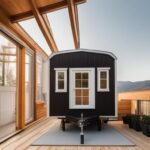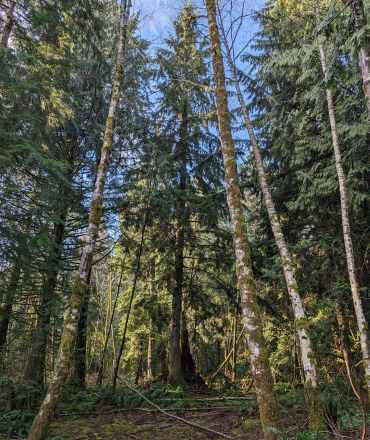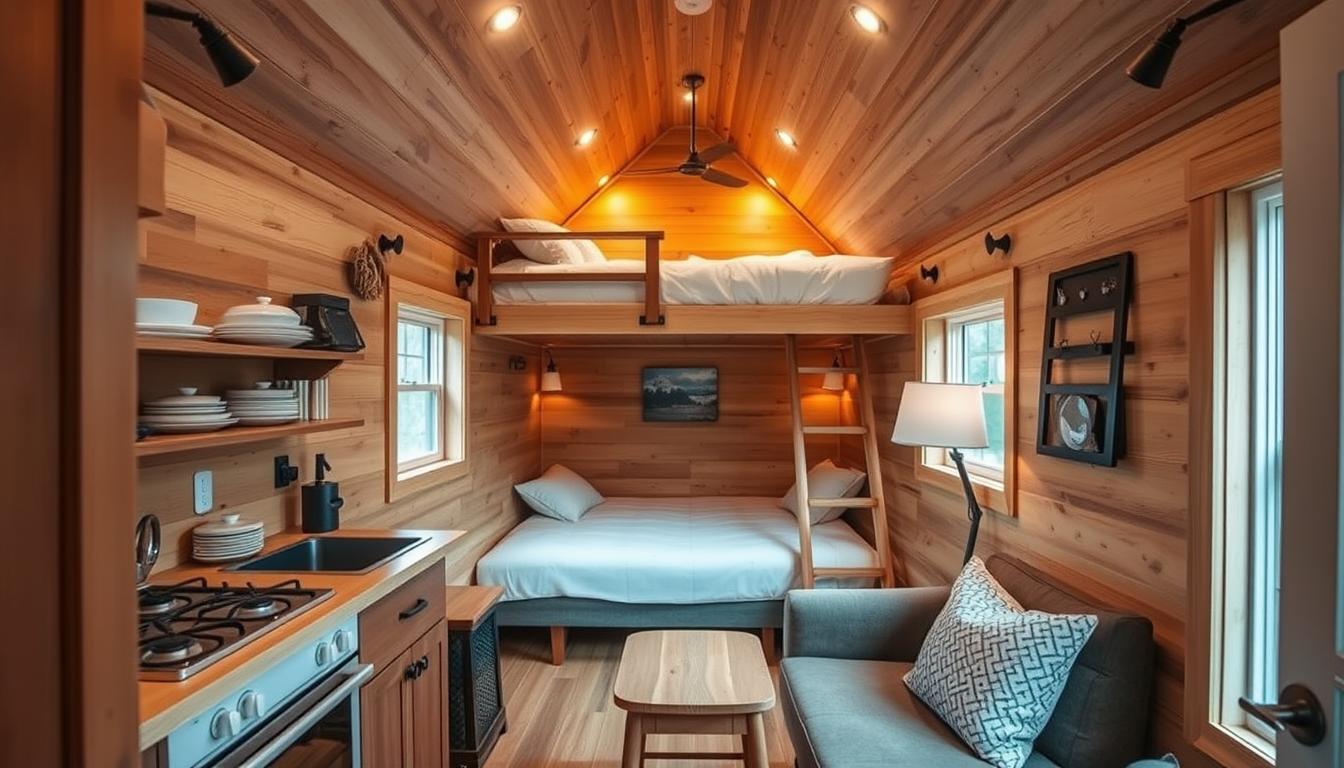What You Will Learn About Tiny House Rent to Own
- Definition and overview of tiny houses and the concept of rent-to-own for tiny houses.
- The advantages and benefits of choosing rent-to-own for a tiny house, including affordability, flexibility, and the opportunity to build equity.
- Considerations, potential challenges, and legal aspects of rent-to-own for tiny houses, as well as tips for finding rent-to-own options and understanding rental terms.
How can tiny house rent to own make homeownership a reality? In recent years, the tiny house movement has gained significant popularity as more people seek minimalist and affordable living options. A tiny house is typically a compact dwelling, often ranging from 100 to 400 square feet in size, that provides the essentials for comfortable living. These homes are designed to maximize space utilization and minimize environmental impact.

Definition and Overview of Tiny Houses
Tiny houses are small, fully-functional homes that offer an alternative to traditional housing. They often feature clever design elements, such as lofted sleeping areas, multi-purpose furniture, and efficient storage solutions. Tiny houses can be either stationary or portable, with some models built on wheels for easy transport.
Explanation of the Rent-to-Own Concept for Tiny Houses
Rent-to-own is a financing option that allows individuals to rent a property with the option to purchase it at a later date. This arrangement is particularly beneficial for those who may not have the means to make an immediate full purchase. With rent-to-own for tiny houses, prospective homeowners can enjoy the benefits of living in a tiny house while working towards eventual ownership.

Benefits of Choosing Rent-to-Own for a Tiny House
Affordability and Flexibility in Payment Options
One of the primary advantages of the rent-to-own model for tiny houses is the affordability it offers. Instead of needing a large sum of money upfront, individuals can enter into a rental agreement with the option to buy the property in the future. This allows for a more manageable payment structure, as the down payment and monthly installments can be spread out over a longer period.
Opportunity to Test Out the Tiny House Lifestyle Before Committing to Ownership
Renting a tiny house before committing to ownership provides an excellent opportunity to experience the lifestyle firsthand. Living in a tiny house allows individuals to understand the unique challenges and benefits it offers, such as simplified living, reduced maintenance, and increased mobility. Renting before owning ensures that the tiny house lifestyle is the right fit before making a long-term commitment.
Potential for Building Equity While Renting
Another advantage of the rent-to-own arrangement is the potential for building equity during the rental period. Rent payments may include a portion allocated towards the eventual purchase price. This means that renters have the opportunity to accumulate equity over time, similar to traditional homeownership, while enjoying the benefits of living in a tiny house.

Considerations and Potential Challenges of Rent-to-Own for Tiny Houses
While the rent-to-own model for tiny houses offers many advantages, there are several considerations and potential challenges to keep in mind.
Importance of Understanding the Terms and Conditions of the Rent-to-Own Agreement
Before entering into a rent-to-own agreement, it is crucial to thoroughly understand the terms and conditions outlined in the contract. This includes the duration of the rental period, the purchase price, any additional fees or penalties, and the responsibilities of both the tenant and the landlord. Seeking professional legal advice can help ensure that all aspects of the agreement are clear and fair.
Potential Risks and Limitations of Rent-to-Own Contracts
Rent-to-own contracts can have certain risks and limitations that individuals should be aware of. For example, if the tenant fails to meet the agreed-upon terms, they may lose the option to purchase the property and any accumulated equity. Additionally, if the property depreciates in value during the rental period, the purchase price may no longer be a favorable deal. It is important to carefully evaluate the risks and benefits before entering into a rent-to-own agreement.
Factors to Consider When Deciding if Rent-to-Own is the Right Option for a Tiny House
Choosing the right housing option is a personal decision that depends on various factors. When considering rent-to-own for a tiny house, individuals should assess their long-term plans, financial stability, and lifestyle preferences. It is essential to evaluate whether the tiny house lifestyle aligns with their goals and if the rent-to-own arrangement is a viable path towards homeownership.

Finding Rent-to-Own Tiny Houses
Finding rent-to-own tiny houses requires a proactive approach and thorough research. Here are some avenues to explore:
Online Platforms and Websites Specialized in Rent-to-Own Tiny House Listings
Numerous online platforms and websites cater specifically to the tiny house market. These platforms often have a section dedicated to rent-to-own listings, making it easier to find available properties. Utilizing search filters and keywords related to rent-to-own can help narrow down the options and find the perfect tiny house to rent with the option to own.
Local Classifieds, Tiny House Communities, and Networking for Rent-to-Own Options
Local classifieds, both online and offline, can be a valuable resource for finding rent-to-own opportunities in the area. Additionally, reaching out to tiny house communities and networking with individuals in the industry can provide insider information on available properties. Attending tiny house events and workshops can also facilitate connections and lead to potential rent-to-own opportunities.
Tips for Conducting Research, Visiting Properties, and Negotiating Agreements
When conducting research on potential rent-to-own properties, it is important to gather as much information as possible. This includes examining property listings, reading reviews, and comparing prices. When visiting properties, individuals should pay close attention to the condition of the tiny house and the surrounding area. It is also advisable to negotiate the terms of the rent-to-own agreement, seeking professional guidance if needed, to ensure a fair and favorable deal.
Understanding the Rental Terms for Tiny Houses
Rent-to-own agreements for tiny houses have specific terms and conditions that individuals should be familiar with. Here are some key aspects to consider:
Key Terms and Conditions in a Rent-to-Own Agreement for a Tiny House
Rent-to-own agreements typically include essential terms such as the duration of the rental period, the purchase price, and the option fee. The duration of the rental period can vary, typically ranging from one to three years. The purchase price should be clearly stated in the agreement, along with any adjustments based on market conditions. The option fee, paid upfront, secures the right to purchase the property at a later date.
Duration of the Rental Period and Monthly Payment Considerations
The duration of the rental period is an important factor to consider. It should align with the individual’s financial goals and ability to save for the eventual purchase. Longer rental periods may provide more time to accumulate equity but may also mean a more extended commitment before ownership. Monthly payment considerations include not only the rental amount but also any additional fees, such as utilities or maintenance costs.
Down Payment Requirements and Rental Credits Towards the Purchase Price
Rent-to-own agreements often require a down payment, similar to traditional homeownership. This amount is typically a percentage of the purchase price and is paid upfront or in installments. Some agreements may also allocate a portion of the monthly rent towards the eventual purchase price, known as rental credits. These credits accumulate over time and contribute to the equity built during the rental period.
Legal Considerations for Rent-to-Own Tiny Houses
Seeking legal advice is crucial when entering into a rent-to-own agreement for a tiny house. Here are some legal considerations to keep in mind:
Importance of Seeking Legal Advice Before Entering a Rent-to-Own Agreement
Rent-to-own agreements involve complex legal matters that require professional guidance. Consulting with a real estate attorney can help individuals fully understand their rights and obligations under the agreement. An attorney can review the contract, explain any legal jargon, and ensure that the terms are fair and legally binding.
Reviewing Contracts and Understanding Local Zoning Regulations
Reviewing the rent-to-own contract in detail is essential to avoid any surprises or misunderstandings. It is important to understand the responsibilities of both parties, including maintenance, repairs, and insurance obligations. Additionally, individuals should familiarize themselves with local zoning regulations to ensure that living in a tiny house is permitted in the designated area.
Ensuring Protection for All Parties Involved in the Agreement
Rent-to-own agreements should prioritize the protection of all parties involved. The agreement should clearly outline the rights and responsibilities of both the tenant and the landlord. It is advisable to include provisions that address potential disputes, termination clauses, and conditions for exercising the purchase option. Ensuring a fair and balanced agreement is crucial for a successful rent-to-own experience.
Financial Planning for Rent-to-Own Tiny Houses
Proper financial planning is essential when considering rent-to-own for a tiny house. Here are some key aspects to consider:
Budgeting for the Rental Phase and Saving for a Down Payment
Creating a budget for the rental phase is crucial to ensure financial stability. It is important to account for monthly rent payments, utilities, and other living expenses. Simultaneously, individuals should focus on saving for the eventual down payment to secure the purchase option. Developing a savings plan and setting aside a portion of income specifically for the down payment can help achieve this goal.
Evaluating Personal Finances and Affordability for the Eventual Purchase
Before committing to a rent-to-own agreement, individuals should evaluate their personal finances and determine affordability for the eventual purchase. This includes considering factors such as credit history, income stability, and debt-to-income ratio. It is important to ensure that the ongoing monthly payments for the purchase phase align with personal financial capabilities.
Exploring Financing Options for the Final Purchase
When the time comes to exercise the purchase option, exploring financing options is crucial. This may include obtaining a mortgage loan or exploring alternative financing methods specifically tailored for tiny houses. Researching and comparing different lenders can help individuals find the most favorable terms and secure financing for the final purchase.
Maintenance and Insurance for Rent-to-Own Tiny Houses
Proper maintenance and insurance coverage are essential to protect the investment in a rent-to-own tiny house.
Tenant Responsibilities for Maintaining the Tiny House During the Rental Period
As a tenant in a rent-to-own agreement, it is important to understand the maintenance responsibilities. This includes regular cleaning, addressing minor repairs, and ensuring the overall upkeep of the tiny house. Taking care of the property not only maintains its value but also demonstrates a commitment to homeownership.
Obtaining Adequate Insurance Coverage for a Rent-to-Own Tiny House
Insurance coverage is necessary to protect the tiny house from unforeseen events. As a renter, it is crucial to obtain renter’s insurance that covers personal belongings and liability. Additionally, the landlord should have insurance coverage that protects the property itself. It is important to review the insurance requirements in the rent-to-own agreement and ensure that adequate coverage is in place.
Tips for Protecting the Investment and Ensuring Longevity
To protect the investment in a rent-to-own tiny house, individuals should implement preventative maintenance measures. This includes regular inspections, addressing any issues promptly, and following manufacturer recommendations for maintenance and care. Proper maintenance ensures the longevity of the tiny house and contributes to its value as the ownership transition approaches.

Transitioning from Renter to Owner of a Tiny House
Transitioning from a renter to an owner involves several steps. Here’s an overview of the process:
Steps Involved in Transitioning from a Renter to an Owner
Transitioning from a renter to an owner typically involves exercising the purchase option outlined in the rent-to-own agreement. This may require providing notice to the landlord within a specified timeframe, expressing the intention to purchase the property. Following the contract guidelines, individuals will need to secure financing, complete necessary paperwork, and finalize the ownership transfer.
Exercising the Purchase Option and Securing Financing
Exercising the purchase option is the critical step towards homeownership. It involves formally notifying the landlord of the decision to purchase the property. Once the purchase option is exercised, individuals will need to secure financing for the agreed-upon purchase price. This may involve working with a mortgage lender or exploring other financing options.
Completing Necessary Paperwork and Finalizing the Ownership
Finalizing the ownership transfer requires completing the necessary paperwork. This may include drafting a purchase agreement, obtaining title insurance, and recording the transfer with the appropriate local authorities. It is important to ensure that all legal requirements are met to complete the transition from renter to owner successfully.
Final Thoughts and Additional Considerations for Tiny House Rent to Own
Rent-to-own for tiny houses can be an excellent pathway to homeownership for individuals seeking affordable and sustainable living options. However, it is crucial to carefully consider all aspects of the arrangement, including financial readiness, legal implications, and personal lifestyle preferences.
Case Study: Transitioning from Renter to Owner of a Tiny House
Meet Sarah, a young professional who has always dreamed of owning her own home but found the traditional housing market to be unaffordable. She came across the concept of tiny houses and was immediately intrigued by their affordability and minimalistic lifestyle. However, she was hesitant to commit to homeownership without experiencing the tiny house lifestyle firsthand.
That’s when Sarah discovered the option of rent-to-own for tiny houses. She found a beautiful tiny house in a nearby community that offered a rent-to-own agreement. This allowed her to rent the tiny house for a specified period while having the option to purchase it at the end of the rental term.
During the rental phase, Sarah fell in love with the tiny house lifestyle. She appreciated the simplicity, the freedom from excessive belongings, and the reduced financial burden. As she continued to rent the tiny house, she diligently saved for the eventual purchase, knowing that her rental payments were building equity towards owning the property.
When the rental term was nearing its end, Sarah decided it was time to transition from a renter to an owner. She exercised the purchase option outlined in her rent-to-own agreement, and with the help of a mortgage loan, she secured the financing needed to buy the tiny house.
Sarah completed the necessary paperwork and went through the finalization process to officially become the owner of her dream tiny house. She was overjoyed to have achieved homeownership in a way that was both affordable and aligned with her values.
Through her experience with rent-to-own for a tiny house, Sarah learned the importance of carefully reviewing the terms and conditions of the agreement and seeking legal advice to ensure a smooth transition. She also discovered the value of budgeting, saving, and exploring financing options to make the purchase a reality.
Sarah’s success story is just one example of how the rent-to-own option for tiny houses can make homeownership a reality for individuals who may not have otherwise been able to afford it. It offers the opportunity to test out the tiny house lifestyle, build equity while renting, and ultimately transition from a renter to an owner.
Summary of Key Points Discussed in the Article
Throughout this article, we have covered the definition and overview of tiny houses, the rent-to-own concept, and the benefits it offers. We have explored the advantages of affordability, the opportunity to test out the lifestyle, and the potential for building equity. Additionally, we have discussed considerations, potential challenges, and various aspects to keep in mind when entering into a rent-to-own agreement.
Addressing Common Concerns and Offering Advice for an Informed Decision
It is common to have concerns and questions when considering rent-to-own for a tiny house. By thoroughly researching the options, seeking professional advice, and evaluating personal financial readiness, individuals can make an informed decision. Rent-to-own can be a viable pathway to homeownership, but it requires careful planning and consideration of all relevant factors.
Exploring Alternative Housing Options for Those Not Suited for Rent-to-Own
While rent-to-own for tiny houses provides an excellent opportunity for many individuals, it may not be the right fit for everyone. Exploring alternative housing options, such as traditional homeownership, renting a tiny house without the option to buy, or even joining a tiny house community, can still fulfill the desire for a simplified and sustainable lifestyle.
Answers To Common Questions
What is a tiny house?
A tiny house is a small, compact living space typically under 500 square feet.
Who can rent to own a tiny house?
Anyone who meets the requirements set by the rental company or landlord.
How does rent to own work for tiny houses?
Rent to own allows you to rent a tiny house with the option to purchase it in the future.
What if I change my mind about buying the tiny house?
Most rent-to-own agreements give you the flexibility to opt out without any obligations.
How long does it take to own a tiny house through rent to own?
The duration varies, but it typically ranges from 1 to 5 years depending on the agreement.
What if I can’t afford the monthly payments?
Discuss your financial situation with the rental company to explore potential alternatives or adjustments.
Dr. Michelle Thompson is an expert in the field of alternative housing and sustainable living. She holds a Ph.D. in Environmental Science and has spent the past decade conducting research and writing extensively on the topic. Dr. Thompson’s passion for tiny houses and their potential for increasing homeownership opportunities has led her to explore innovative approaches such as rent-to-own agreements.
With a background in financial planning and real estate, Dr. Thompson brings a unique perspective to the subject matter. She has worked closely with individuals and families to help them navigate the complexities of rent-to-own contracts and make informed decisions about their housing options. In addition to her academic credentials, Dr. Thompson has practical experience in the field, having lived in a tiny house herself for several years.
Dr. Thompson’s expertise is highly sought after, and she frequently delivers lectures and workshops on the benefits and challenges of tiny house living. She is also a regular contributor to reputable publications in the housing and sustainability sectors. Through her research and practical knowledge, Dr. Thompson aims to empower individuals to achieve their dream of homeownership through the innovative concept of tiny house rent-to-own.










